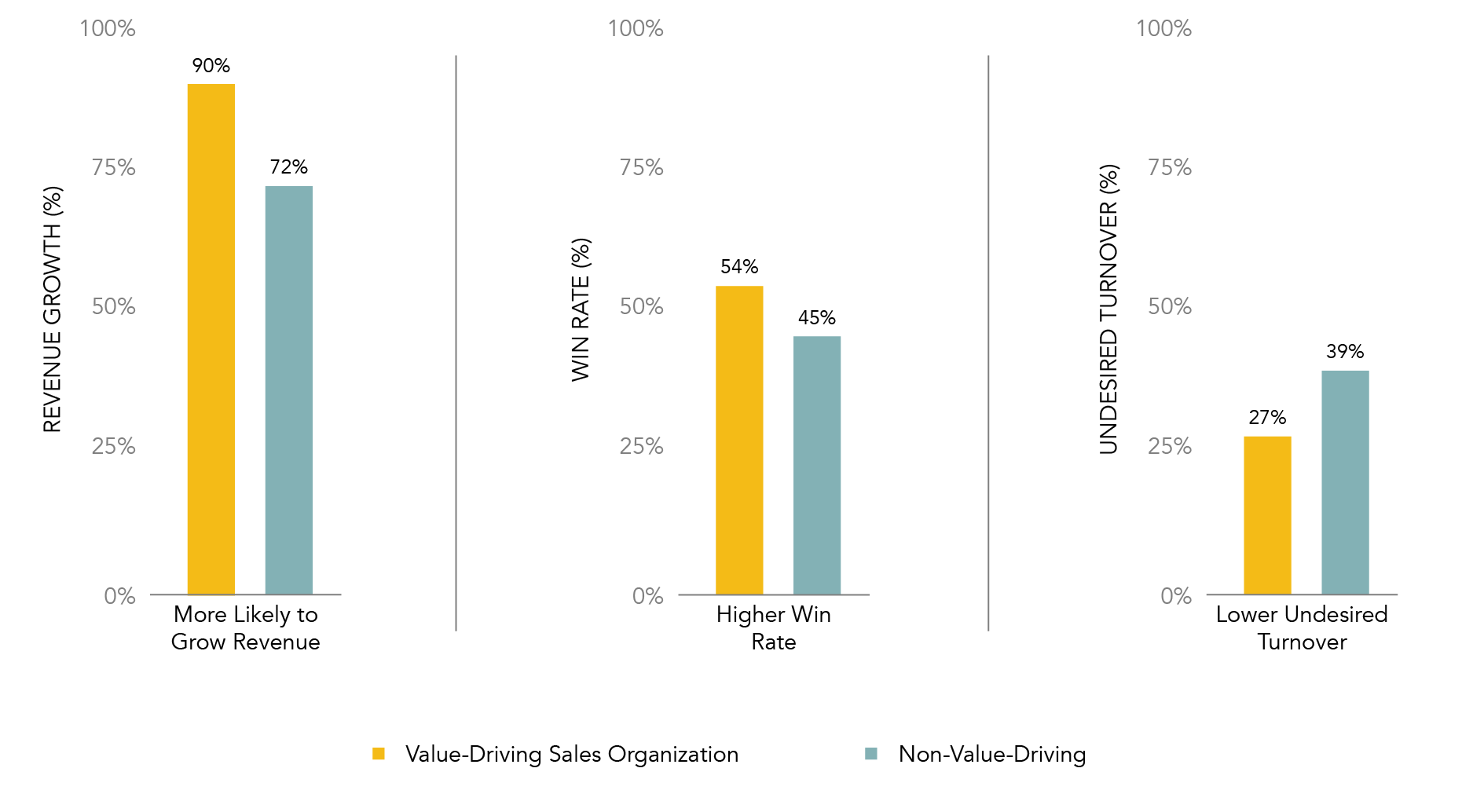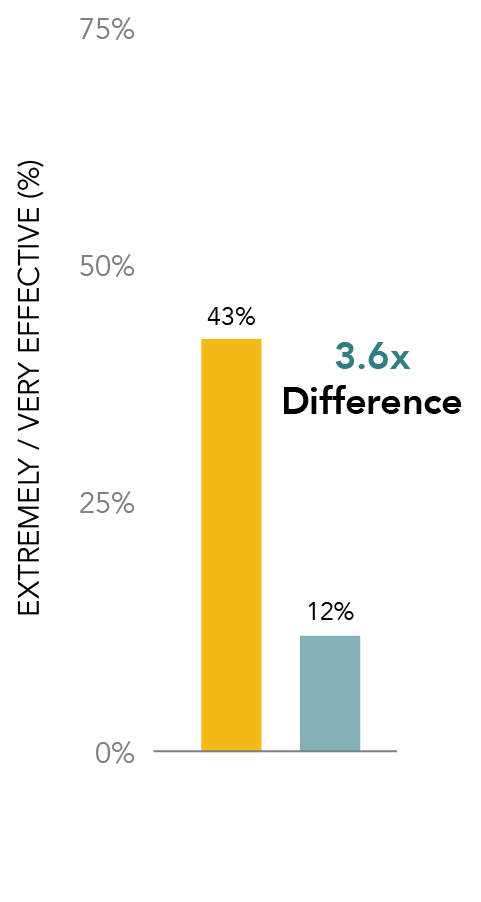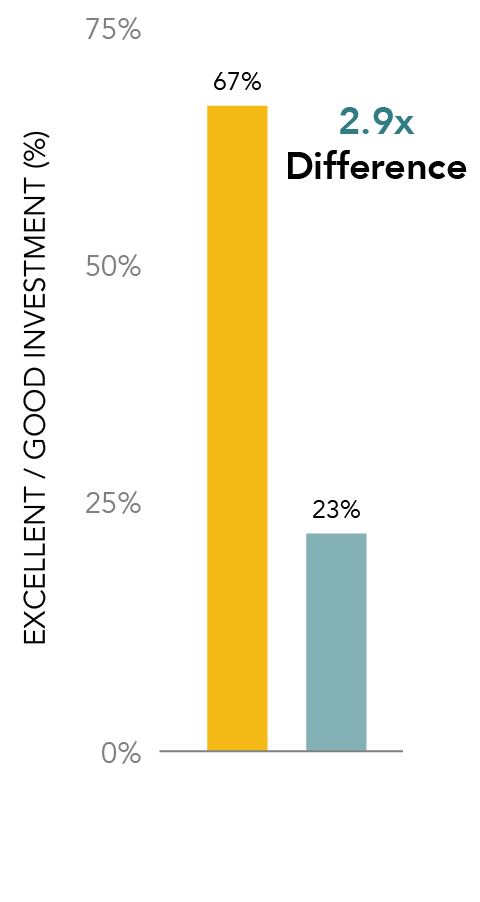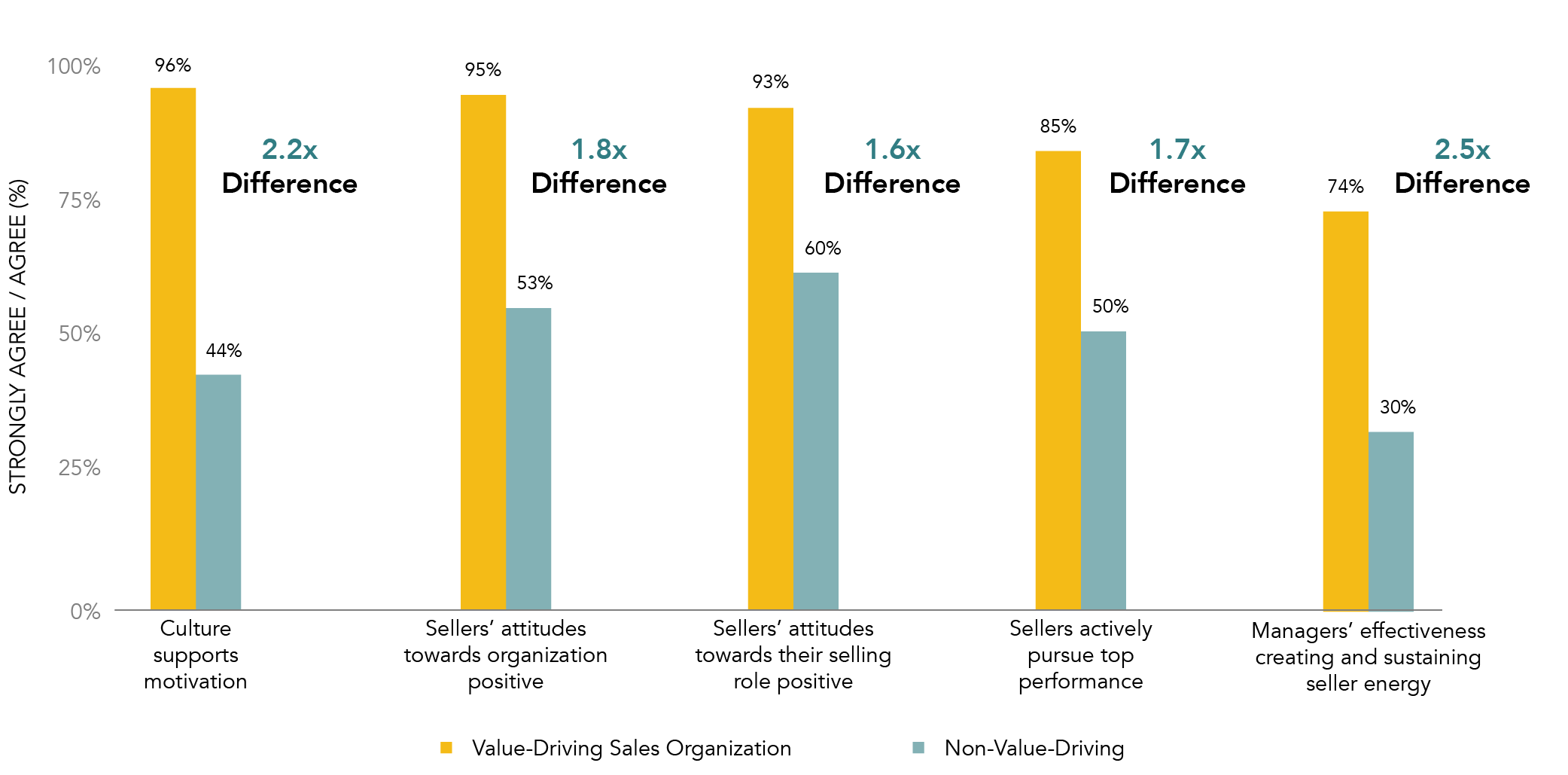Everyone says, "Sell value, drive value, make sure buyers both perceive and receive exceptional value from you, and your sales teams will be more successful."
Is everyone right, though? Do sellers and sales organizations where sellers consistently drive buyer value get better results? And, if so, what's the actual return?
Most leaders tell us they only have room for a precious few priorities. They need to know what the return will be on any investment they make. If you’re considering making an investment in increasing your sales organization’s ability to drive value, this article will give you a framework for understanding what the return might be, and how value-driving sales organizations are different.
Through the RAIN Group Center for Sales Research, we study sellers, sales organizations, buyers, and buying. A recurring theme in our research is the importance of value.
- Sales winners are 3X more likely to bring new ideas and perspectives to buyers compared to second-place finishers (this is also the #1 factor most separating the two groups)
- 81% of Top-Performing Sales Organizations agree they focus on driving maximum value for buyers (compared to only 61% of The Rest)
- Sellers "focus on the value they can deliver me" is the #1 most influential factor buyers report impacting their purchase decision (96% find it influential)
As part of our Top-Performing Sales Organization research, we wanted to see just what kind of difference value makes.
We studied 472 sellers and executives globally at mid-size and large companies. We identified 16% of respondents as being Value-Driving Sales Organizations based on their value- and customer-focus orientation.
Through our research, we identified 10 ways Value-Driving Sales Organizations outperform their Non-Value-Driving counterparts:
10 Markers of Value-Based Organizations
|
10 Differences Between Value-Driving Sales Organizations and Non-Value-Driving Organizations
Value-Driving Sales Organizations outperform Non-Value-Driving Sales Organizations across a number of categories. Value-Driving Sales Organizations are significantly more likely to:
- Grow revenue
- Have remarkably higher win rates on proposed sales
- Have lower undesired sales turnover (i.e., they retain their productive sellers)

Further examination of these groups under the specified criteria helped us to uncover 7 additional correlations that set Value-Driving Organizations apart from the rest:
- Priorities: We studied both leadership's prioritization of improving sales force effectiveness and leadership's ability to execute on priorities. Both correlate significantly to top sales performance.
88% of company leaders in Value-Driving Sales Organizations prioritize improving sales force effectiveness. Other organizations? Only 54% do.
We also asked company leaders, "When you set a priority, does the priority get done?" 85% of leaders in Value-Driving Sales Organizations answered yes, whereas only 49% of company leaders in Non-Value-Driving Sales Organizations agreed.
It's no surprise: the rigor and investment leadership allocates to sales performance makes a difference.
- Process Orientation: In our experience, without a unifying framework for sales processes, sales methods, and strategic account processes, sellers are left to their own devices. Without structure, some sellers focus on value and others don't (not necessarily for dubious reasons, often they don't know how). When this happens, average results are the norm.
By definition, 100% of leaders in Value-Driving Sales Organizations say their sales process is customer-focused and maps to their buyers' buying processes. Only 38% of those in Non-Value-Driving Sales Organizations claim this is true about their process.
Additionally, 100% of sales leaders in Value-Driving Sales Organizations say their sales process is flexible to apply to their buyers' various roles and situations, whereas only 45% of respondents in Non-Value-Driving Sales Organizations say this is true about their sales process.
In other words, when buyers buy from a value-driving organization, they know it. The selling process is focused on buyers and customized to their unique situations.
- Focus and investment in sales training: Leaders at Value-Driving Sales Organizations not only prioritize developing sellers to be as valuable as possible to buyers, but also invest in it. And when sales leaders prioritize training, there's a significant rise in sales skills across the board.
Value-Driving Organizations Have More Effective Sales Training
Value-Driving Organizations Have Greater Investment in Sales Training



- Better sales skills: Across every skill area, Value-Driving Sales Organizations have significantly stronger sales skills—in some cases 3X stronger skills than Non-Value-Driving Sales Organizations. Given that we know Value-Driving Sales Organizations invest more heavily in their sales training, and that their training is rated more effective, it's no wonder they have higher win rates, revenue growth, and sales force retention.
- Highly-motivated sales forces: Sellers will tell you, "If I believe in what I'm selling, I can sell so much more of it." When sellers work at an organization they believe prioritizes driving customer value, and when their leaders prioritize helping sellers to create said value, seller motivation is drastically higher.
Certainly, sellers bring their own intrinsic motivation to their jobs. It's up to the organization, however, to tap into seller motivation at a high level and sustain it. The extraordinary differences comparing Value-Driving Sales Organizations and Non-Value-Driving regarding sales motivation are stark.
Value-Driving Organizations and Motivation

- Account and Lead Assignment: By definition, Value-Driving Sales Organizations align their sales force structure with the way customers prefer to buy. This often means assigning leads and accounts not only based on territory, but also on buyer industry, company size, and need.
Indeed, Value-Driving Sales Organizations understand what their buyers are looking for and assign the people who are best suited to win and grow accounts. In fact, they are nearly 3X as likely as Non-Value-Drivers to be aligned with the way their customers prefer to buy.
- Pricing: By definition, Value-Driving Sales Organizations focus on driving maximum value for their customers (100% compared to 59% of Non-Value-Driving Sales Organizations).
They're also 2X more likely to agree their pricing strategy allows them to capture maximum prices in line with the value they provide. Our experience supports this. By focusing on customer value over price, companies maximize pricing and improve margins.
Value-based selling makes a tremendous difference in a sales organization’s process, approach, and results. If you want to enjoy these results and join the 16% of Value-Driving Sales Organizations, you can start by:
- Making value a priority
- Aligning your structures and sales processes to be customer-centric and flexible
- Investing in sellers' abilities to be more skilled, knowledgeable, and valuable






